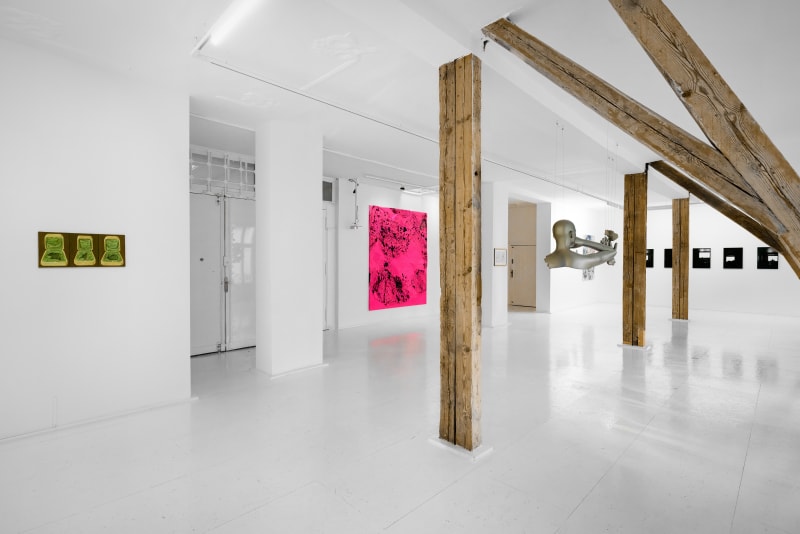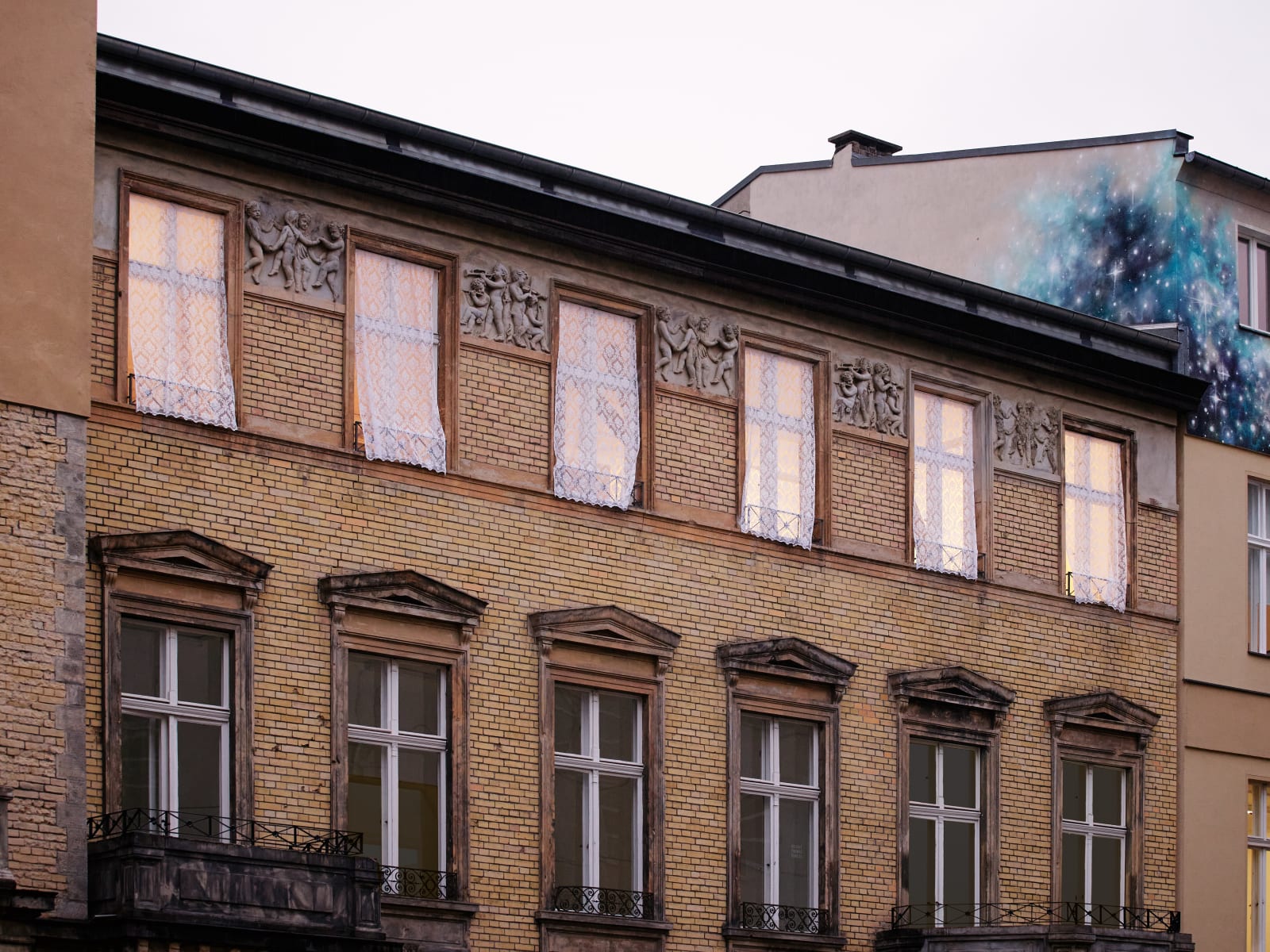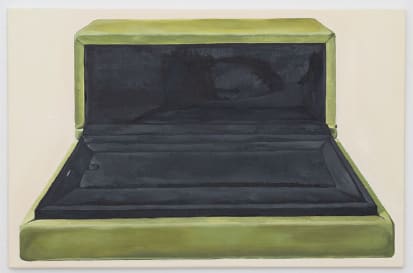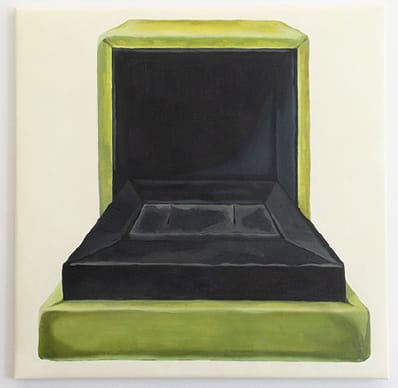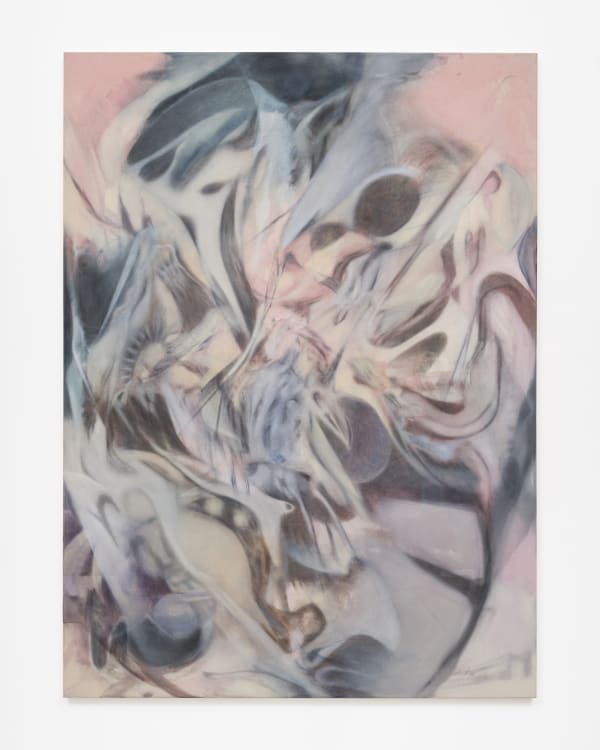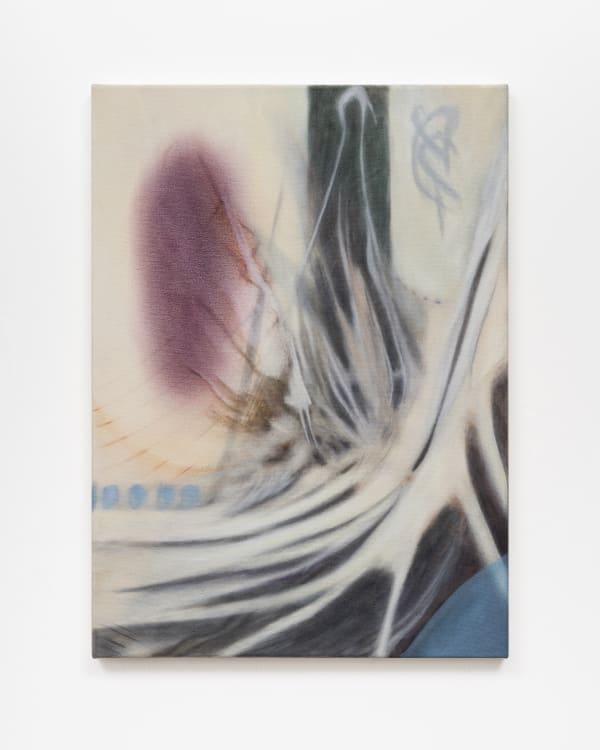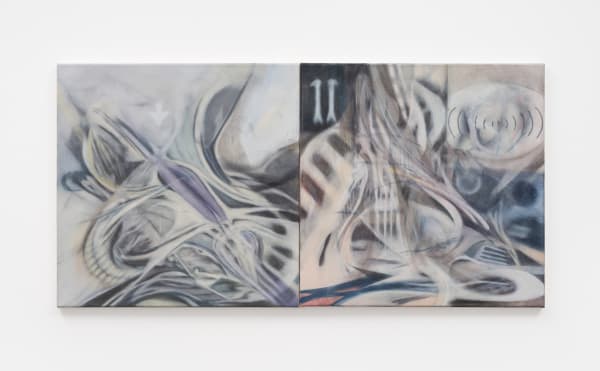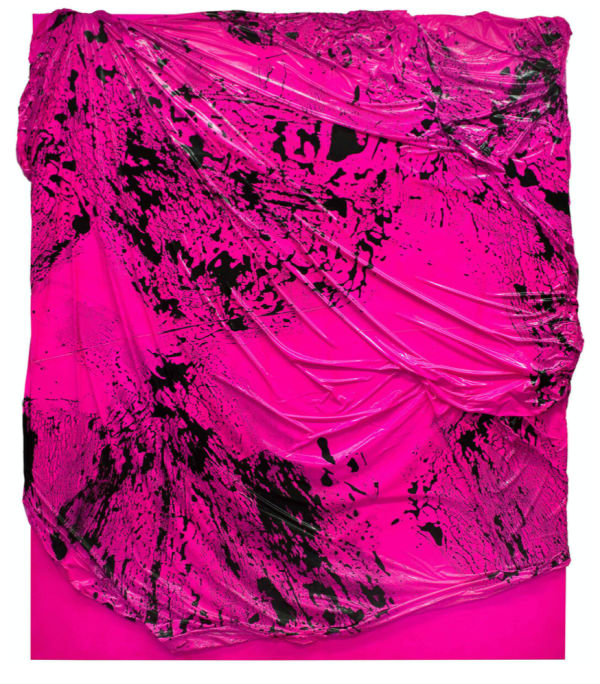A Single Hurt Color: Alberto Giacometti, Göksu Kunak, Kolja Kärtner Sainz, Dean Sameshima, Marianna Uutinen, Ming Yuan
A Single Hurt Color takes its name from “A Carafe, That Is a Blind Glass,” the opening prose poem of Gertrude Stein’s Tender Buttons from 1914. In that book, objects speak and take on agency, acting instead of signifying. Collapsing sense and sensation, her experiment was rooted in looking, especially at Cézanne, whose portraits of his wife taught her that the world could be shattered and reassembled as facets, perception itself as the subject. A generation later, Alberto Giacometti copied Cézanne’s Madame Cézanne, then spent a lifetime modeling human presence as if distance were the true medium. His attenuated figures are all edge and aura, near and far at once. The line that closes Stein’s opening poem, “the difference is spreading,” offers a second key. It names a felt interval in which identity, relation, and form begin to change.
This exhibition reads through singular experiences that also speak to loneliness and alienation, especially the condition of being an outsider. It also names the difference of being queer in a largely heteronormative public sphere. Pain is not treated as spectacle. It is understood as history registering in pigment and surface, as marginality and gender pressing on form in profound ways. Stein’s poem can be read as a coded love poem to Alice B. Toklas and as a declaration of difference in modernist writing and looking. In that spirit, Göksu Kunak expands what an artwork can be.
Göksu Kunak’s Don’t Let Them Shoot the Kite takes its title from Tunç Başaran’s 1989 film about Barış, a boy growing up inside a women’s prison. For Kunak, this story becomes a many layered metaphor for suppression, migrant realities, self determination, and resistance to social and political limits. In this installation, two 3D printed busts are suspended before a wall that carries projected video and drawn motifs. The gestures derive from photographs in the DOMiD archive that document Turkish workers in the 1960s undergoing humiliating medical examinations in Istanbul, meant to judge fitness for labor in Germany. In a line of bodies under shared scrutiny, each worker stands alone inside that judgment. The quoted gestures hold the emotional and physical memory of that passage. A white embroidered curtain, familiar from domestic interiors in Turkey, veils an architectural opening and turns visibility into a charged threshold. It speaks to the tension between exposure and shelter, between remembrance and suppression. The curtain points to the public and private dichotomy and to social separation and estrangement, which are central themes in Başaran’s story and in many migrant lives.
Dean Sameshima’s being alone anchors a second reading of Stein’s carafe. Twenty five black and white photographs picture anonymous viewers bathed in the glow of blank cinema screens. With no faces show, only the architecture that protects remains. Earlier series mapped apertures of queer space. Here the emptied screen speaks. Absence becomes a medium of relation. In one photograph two silhouettes sit before the same radiant rectangle, and they are still alone together. The images describe a form of common solitude and propose that desire can be strongest in what is withheld. As in Giacometti, proximity does not cancel solitude. It clarifies it.
Kolja Kärtner Sainz paints as if membranes and engines were learning each other’s grammar. The Hypernode paintings stage meetings between the embryonic and the metallic. Ribs and beams, membranes and alloys, flicker in and out of legibility and mutate across canvases like a system evolving new organs. Timothy Morton’s reminder that we are always inside an object is useful here. These works act like cross sections of an ecology that lets bodies happen. They refuse a single vantage and invite the viewer to sense scale through attention rather than through outline. Here the language of alienation becomes fully abstract as color tends toward a single register, almost monochrome.
Ming Yuan’s ALIBI replicates Van Cleef and Arpels boxes, velvet lined and carefully lit, replacing the jewel as the protagonist. What remains when ornament is removed? Ming Yuan’s boxes are vessels dense with expectation. In stripping away the gem, she refuses a history in which Asiatic femininity has been staged as portable ornament. The vacancy points to replica economies and to the theater of quiet luxury. It shows how class performance scripts desire and how identity is framed by surfaces that frame other surfaces.
Marianna Uutinen pushes painting until it enters the room. Creased strips of acrylic become chromatic reliefs that oscillate between glamour and grit. Golds, primaries, anilines, and black draw the eye, yet the pleasure is architectural. These are not pictures of allure. They produce allure as a function of material fact. Gesture becomes object and the surface begins to think. In this presentation, several works press color toward a single field so that the image is nearly monochrome and solitude becomes a matter of light.
Stein studied Cézanne to learn how to look. Giacometti studied Cézanne to learn how to keep looking when likeness fails. A Single Hurt Color carries their lesson forward. It proposes that color can be an event and that form can be a relation. It suggests that the most precise art can be the most withholding. The aim is to let meaning accumulate in the space between. In that interval, which might be the ache of a carafe, the hush of a blank screen, or the quiet inside a jewel box, vision and touch converge. What we see is not only what is there. It is also what it feels like to be held, briefly and exactly, at the threshold.
-
 Göksu Kunak, Don't Let Them Shoot The Kite, 2025, 3D Print, Video, Chalk drawing, 29x30xH53cm and 83x34xH57 cm
Göksu Kunak, Don't Let Them Shoot The Kite, 2025, 3D Print, Video, Chalk drawing, 29x30xH53cm and 83x34xH57 cm -
 Yuan Ming, Alibi Bird, 2025, Oil on Canvas, 20 x 30 x 2cm
Yuan Ming, Alibi Bird, 2025, Oil on Canvas, 20 x 30 x 2cm -
 Yuan Ming, Alibi Polar Bear, 2025, Oil on Canvas, 20 x 30 x 2cm
Yuan Ming, Alibi Polar Bear, 2025, Oil on Canvas, 20 x 30 x 2cm -
 Yuan Ming, Alibi Rabbit, 2025, Oil on Canvas, 20 x 30 x 2cm
Yuan Ming, Alibi Rabbit, 2025, Oil on Canvas, 20 x 30 x 2cm
-
 Yuan Ming, Alibi VIII, 2025, Oil on Cotton Canvas, 75 x 116 x 2 cm
Yuan Ming, Alibi VIII, 2025, Oil on Cotton Canvas, 75 x 116 x 2 cm -
 Yuan Ming, Alibi V, 2025, Oil on Cotton Canvas, 75 x 75 x 2cm
Yuan Ming, Alibi V, 2025, Oil on Cotton Canvas, 75 x 75 x 2cm -
 Alberto Giacometti, Studio And Anette, 1964, Etchings from two plates on cream wove paper, 28.1 × 44 cm
Alberto Giacometti, Studio And Anette, 1964, Etchings from two plates on cream wove paper, 28.1 × 44 cm -
 Kolja Kärtner Sainz, Untitled (Ears to Eyes), 2024, Oil and ink on canvas, 150 x 110 cm
Kolja Kärtner Sainz, Untitled (Ears to Eyes), 2024, Oil and ink on canvas, 150 x 110 cm
-
 Kolja Kärtner Sainz, Untitled (Blind Spots), 2024, Oil and ink on canvas, 55 x 40 cm
Kolja Kärtner Sainz, Untitled (Blind Spots), 2024, Oil and ink on canvas, 55 x 40 cm -
 Kolja Kärtner Sainz, Eleven (Upgrade), 2025, Oil and ink on canvas, 50 x 100 cm (each 50 x 50 cm)
Kolja Kärtner Sainz, Eleven (Upgrade), 2025, Oil and ink on canvas, 50 x 100 cm (each 50 x 50 cm) -
 Dean Sameshima, being alone (no. 5), 2022, Archival inkjet print, 59.5 x 42 cm
Dean Sameshima, being alone (no. 5), 2022, Archival inkjet print, 59.5 x 42 cm -
 Dean Sameshima, being alone (no. 11), 2022, Archival inkjet print, 59.5 x 42 cm
Dean Sameshima, being alone (no. 11), 2022, Archival inkjet print, 59.5 x 42 cm
